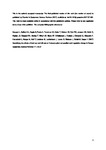Quantifying the effects of land use and climate on Holocene vegetation in Europe
| dc.contributor.author | Marquer, L | |
| dc.contributor.author | Gaillard, M-J | |
| dc.contributor.author | Sugita, S | |
| dc.contributor.author | Poska, A | |
| dc.contributor.author | Trondman, A-K | |
| dc.contributor.author | Mazier, F | |
| dc.contributor.author | Nielsen, AB | |
| dc.contributor.author | Fyfe, R | |
| dc.contributor.author | Jönsson, AM | |
| dc.contributor.author | Smith, B | |
| dc.contributor.author | Kaplan, JO | |
| dc.contributor.author | Alenius, T | |
| dc.contributor.author | Birks, HJB | |
| dc.contributor.author | Bjune, AE | |
| dc.contributor.author | Christiansen, J | |
| dc.contributor.author | Dodson, J | |
| dc.contributor.author | Edwards, KJ | |
| dc.contributor.author | Giesecke, T | |
| dc.contributor.author | Herzschuh, U | |
| dc.contributor.author | Kangur, M | |
| dc.contributor.author | Koff, T | |
| dc.contributor.author | Latałowa, M | |
| dc.contributor.author | Lechterbeck, J | |
| dc.contributor.author | Olofsson, J | |
| dc.contributor.author | Seppä, H | |
| dc.date.accessioned | 2017-10-24T12:51:21Z | |
| dc.date.issued | 2017-09-01 | |
| dc.identifier.issn | 0277-3791 | |
| dc.identifier.issn | 1873-457X | |
| dc.identifier.other | C | |
| dc.identifier.uri | http://hdl.handle.net/10026.1/10086 | |
| dc.description | publisher: Elsevier articletitle: Quantifying the effects of land use and climate on Holocene vegetation in Europe journaltitle: Quaternary Science Reviews articlelink: http://dx.doi.org/10.1016/j.quascirev.2017.07.001 content_type: article copyright: © 2017 Elsevier Ltd. All rights reserved. | |
| dc.description.abstract |
Early agriculture can be detected in palaeovegetation records, but quantification of the relative importance of climate and land use in influencing regional vegetation composition since the onset of agriculture is a topic that is rarely addressed. We present a novel approach that combines pollen-based REVEALS estimates of plant cover with climate, anthropogenic land-cover and dynamic vegetation modelling results. This is used to quantify the relative impacts of land use and climate on Holocene vegetation at a sub-continental scale, i.e. northern and western Europe north of the Alps. We use redundancy analysis and variation partitioning to quantify the percentage of variation in vegetation composition explained by the climate and land-use variables, and Monte Carlo permutation tests to assess the statistical significance of each variable. We further use a similarity index to combine pollen-based REVEALS estimates with climate-driven dynamic vegetation modelling results. The overall results indicate that climate is the major driver of vegetation when the Holocene is considered as a whole and at the sub-continental scale, although land use is important regionally. Four critical phases of land-use effects on vegetation are identified. The first phase (from 7000 to 6500 BP) corresponds to the early impacts on vegetation of farming and Neolithic forest clearance and to the dominance of climate as a driver of vegetation change. During the second phase (from 4500 to 4000 BP), land use becomes a major control of vegetation. Climate is still the principal driver, although its influence decreases gradually. The third phase (from 2000 to 1500 BP) is characterised by the continued role of climate on vegetation as a consequence of late-Holocene climate shifts and specific climate events that influence vegetation as well as land use. The last phase (from 500 to 350 BP) shows an acceleration of vegetation changes, in particular during the last century, caused by new farming practices and forestry in response to population growth and industrialization. This is a unique signature of anthropogenic impact within the Holocene but European vegetation remains climatically sensitive and thus may continue to respond to ongoing climate change. | |
| dc.format.extent | 20-37 | |
| dc.language | en | |
| dc.language.iso | en | |
| dc.publisher | Elsevier | |
| dc.subject | Climate | |
| dc.subject | Holocene | |
| dc.subject | Human impact | |
| dc.subject | Land use | |
| dc.subject | LPJ-GUESS | |
| dc.subject | Europe | |
| dc.subject | Pollen | |
| dc.subject | REVEALS | |
| dc.subject | Vegetation composition | |
| dc.title | Quantifying the effects of land use and climate on Holocene vegetation in Europe | |
| dc.type | journal-article | |
| dc.type | Journal Article | |
| plymouth.author-url | https://www.webofscience.com/api/gateway?GWVersion=2&SrcApp=PARTNER_APP&SrcAuth=LinksAMR&KeyUT=WOS:000410869400002&DestLinkType=FullRecord&DestApp=ALL_WOS&UsrCustomerID=11bb513d99f797142bcfeffcc58ea008 | |
| plymouth.volume | 171 | |
| plymouth.publication-status | Published | |
| plymouth.journal | Quaternary Science Reviews | |
| dc.identifier.doi | 10.1016/j.quascirev.2017.07.001 | |
| plymouth.organisational-group | /Plymouth | |
| plymouth.organisational-group | /Plymouth/Admin Group - REF | |
| plymouth.organisational-group | /Plymouth/Admin Group - REF/REF Admin Group - FoSE | |
| plymouth.organisational-group | /Plymouth/Faculty of Science and Engineering | |
| plymouth.organisational-group | /Plymouth/Faculty of Science and Engineering/School of Geography, Earth and Environmental Sciences | |
| plymouth.organisational-group | /Plymouth/REF 2021 Researchers by UoA | |
| plymouth.organisational-group | /Plymouth/REF 2021 Researchers by UoA/UoA14 Geography and Environmental Studies | |
| plymouth.organisational-group | /Plymouth/Research Groups | |
| plymouth.organisational-group | /Plymouth/Research Groups/Marine Institute | |
| plymouth.organisational-group | /Plymouth/Users by role | |
| plymouth.organisational-group | /Plymouth/Users by role/Academics | |
| dcterms.dateAccepted | 2017-07-02 | |
| dc.rights.embargodate | 2018-7-10 | |
| dc.identifier.eissn | 1873-457X | |
| dc.rights.embargoperiod | Not known | |
| rioxxterms.versionofrecord | 10.1016/j.quascirev.2017.07.001 | |
| rioxxterms.licenseref.uri | http://www.rioxx.net/licenses/all-rights-reserved | |
| rioxxterms.licenseref.startdate | 2017-09-01 | |
| rioxxterms.type | Journal Article/Review |


